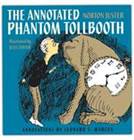Author: Karen Levine
Publisher: Albert Whitman and Company
Genre: History/Non-Fiction
This book is about two stories: a Jewish girl named Hana who gets caught right in the middle of the holocaust and a woman named Fumiko Ishioka half a world away on an inspiring journey to find the identity of a girl named Hana Brady. This book was on my reading list for school and it pairs well with The Berlin Boxing Club because Karl (from The Berlin Boxing Club) and Hana are both kids that get caught in the tremor of the holocaust, but both in different ways.
Fumiko Ishioka is a Japanese woman on a mission to teach children about the tragedy of the holocaust. She works for the Tokyo Holocaust Research and Education Center, which, of course, is located in Tokyo. She teaches kids of today mainly about kids of then, what their lives were like, what the restrictions put into action by the Nazis were, etc. One day, by request, she gets a package in the mail of things that might help her teach the kids at her facility. They include a sock, a shoe, a can of Zyklon-B poisonous gas, and a suitcase, labeled “Hana Brady, Waisenkind (the German word for orphan)”. She wants to figure out who Hana was, what her life was like, and generally, her story. So she searches literally the globe in a determined hunt for clues that might help her. She faces many seemingly dead ends, but doesn’t give up.
Hana’s story is a deeply sorrowful one, but a very humbling one at least. It made me appreciate the life that I had, which was like that of a millionaire compared to hers. She had a brother named George who was three years younger than her, a mother with a booming laugh, and a caring father. First their (Hana’s and George’s) parents get separated from their household, then the children are taken up by their aunt and uncle, then are separated from their guardians, then each other. Along the way are many losses of lives of both friends and family.
The story of Hana comes to a terrible end, but Fumiko Ishioka’s search did not go in vain. She finds a relative who teaches her students about the terrible seven-year period and about personal accounts as well. In fact, the story of Hana herself was told by her relative, and then written down by Karen Levine. Many people may think that authors barely even have to think to write a non-fiction or history book. I mean, it’s already happened, right? It can’t be that hard. WRONG!! This book was clearly very hard to write, but in a way that’s hard to explain. The whole setup is absolutely perfect. The two stories go back and forth in between chapters. Karen Levine also does a very good job of writing it, in a way that seems very real. Again, it’s hard to explain. I would recommend this book to anyone ages thirteen and up.
Posted by: Fred Reads




